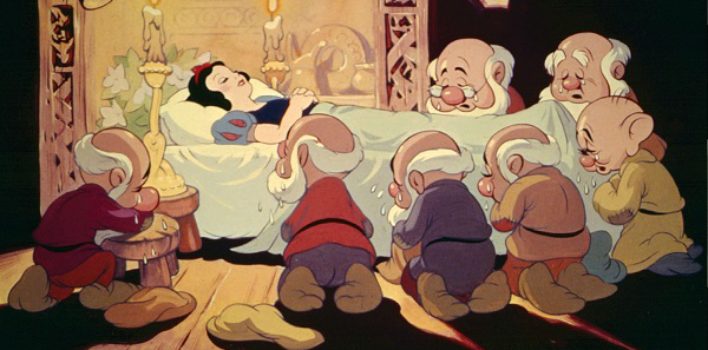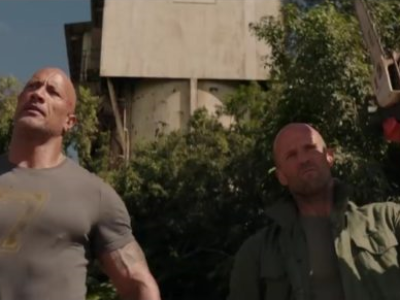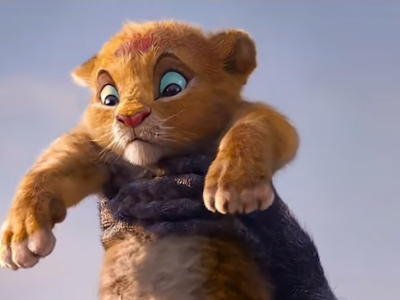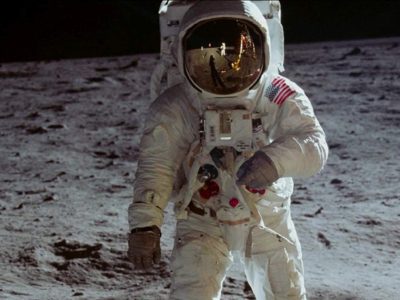Reviewing the Classics| Snow White and the Seven Dwarfs
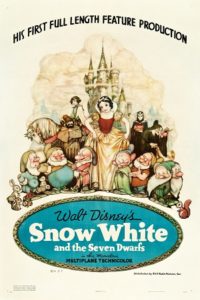 Eighty years ago this month, Walt Disney revolutionized the art of animation with the release of Snow White and the Seven Dwarfs. In the span of only a couple years, Walt had pushed himself and his artists to creative heights they never dreamed of and created a film that broke the feature barrier for animation forever.
Eighty years ago this month, Walt Disney revolutionized the art of animation with the release of Snow White and the Seven Dwarfs. In the span of only a couple years, Walt had pushed himself and his artists to creative heights they never dreamed of and created a film that broke the feature barrier for animation forever.
It’s hard for moviegoers today to imagine a world without animated features. Animation is such a lucrative segment of the box office that it seems like there’s a new film coming out every few weeks. Both adults and children flock to the latest efforts from studios like Pixar, Blue Sky, Illumination, and Walt Disney Animation Studios.
All of today’s animation powerhouses owe their very existence to the success and appeal of Disney’s first princess. So for its 80th anniversary, I thought it might be worth looking back at this truly timeless animated masterpiece. Snow White and the Seven Dwarfs is one of my favorite films of all time – not just because of its place in film history, but because the care given to its artistry and storytelling has been rarely surpassed. And its moral center connects to something spiritual within us.
“Disney’s Folly”
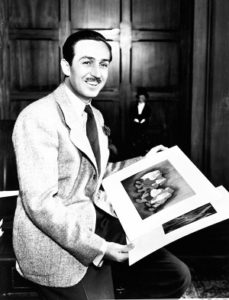 Snow White was a big risk for Walt Disney, both creatively and financially. In the 1930s, animated cartoons were considered bookends for the feature film – nothing more than gag-filled distractions to placate the audience before the main feature. But Disney knew that animation was capable of so much more.
Snow White was a big risk for Walt Disney, both creatively and financially. In the 1930s, animated cartoons were considered bookends for the feature film – nothing more than gag-filled distractions to placate the audience before the main feature. But Disney knew that animation was capable of so much more.
When Disney announced that he was making a feature, many in the film community thought him a madman. No one would sit and watch animation for 90 minutes (it was falsely believed that the bright colors would hurt audiences’ eyes!). The project became known as “Disney’s Folly,” and the survival if the studio itself would hang on Snow White‘s success or failure. Walt Disney needed to change people’s whole attitude toward and perspective about animation with one film.
As my Reel World Theology colleague Alexis Johnson points out in her exceptional analysis of Lotte Reiniger’s The Adventures of Prince Achmed, Snow White was technically not the world’s first animated feature film. Reiniger’s 1926 tale (done with jointed cutouts instead of drawings) did indeed pave the way for long-form animated stories. However, like many things Walt Disney did during his lifetime, he and his staff took the concept of the animated feature film and elevated it to a creative level that was so high, that it became a new thing.
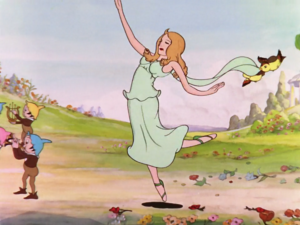 When one watches Snow White today, try to put yourself back in 1935-1937. The level of sophistication in the animation was exceptional for its time. In fact, if one looks at the movement of the human characters in Snow White compared to that of similar characters the Disney animators created just a few short years before (such as the title character in The Goddess of Spring), the evolution is astounding. The movements of Snow White are more natural than the rubbery, exaggerated movement of previous characters.
When one watches Snow White today, try to put yourself back in 1935-1937. The level of sophistication in the animation was exceptional for its time. In fact, if one looks at the movement of the human characters in Snow White compared to that of similar characters the Disney animators created just a few short years before (such as the title character in The Goddess of Spring), the evolution is astounding. The movements of Snow White are more natural than the rubbery, exaggerated movement of previous characters.
Walt Disney pushed his artists to refine their talents and brought in experts from a variety of artistic disciplines to work alongside his staff. European illustrators were hired to help give the film that “old world” fairy tale look. Disney used his Silly Symphony cartoon series as a laboratory for experimental animation techniques. Concepts like Technicolor, scenic depth, human animation, and the like all made their way into this series of cartoons.
Combined with the fun and beautiful songs, as well as the wonderful vocal performances, the animation makes the proceedings on screen more believable for the audience. It is filmmaking at its finest, but using drawings instead of real actors.
“Moving” Drawings
When Snow White was released, the critics and naysayers were silenced by what they saw on the screen, as well as the overwhelming response of audiences. It was the highest-grossing feature film until it was overtaken by Gone with the Wind two years later. Walt Disney’s risk had paid off, and with the profits from Snow White, he built his studio in Burbank, California – which still serves as the Disney Company’s corporate headquarters today.
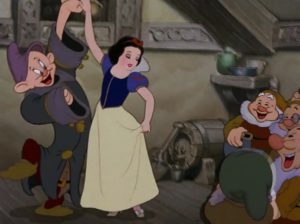 However, what was most astounding and game-changing were the emotional reactions from the audience. People laughed at the gags and antics of the dwarfs, which was a given for cartoons. But they also thrilled at scenes like Snow White meets the Prince or the grotesque transformation of the Wicked Queen into the Old Hag. And they cried when the dwarfs mourned the death of Snow White, only to cheer when she was revived by the Prince’s kiss.
However, what was most astounding and game-changing were the emotional reactions from the audience. People laughed at the gags and antics of the dwarfs, which was a given for cartoons. But they also thrilled at scenes like Snow White meets the Prince or the grotesque transformation of the Wicked Queen into the Old Hag. And they cried when the dwarfs mourned the death of Snow White, only to cheer when she was revived by the Prince’s kiss.
This was something that had never been done before to any degree of success in animation, yet it was the lynchpin that brought Snow White into the pantheon of truly timeless, historic and remarkable films. Walt Disney and his staff had succeeded in making their audience care about drawings. These were only drawings on paper, and people were crying over them!
This now meant that animation was more than a series of gags to give people a cheap laugh. It was a sophisticated storytelling medium that could elicit real emotions from an audience. It can be said that with Snow White, moving drawings had become truly moving drawings.
“The Perfect Story”
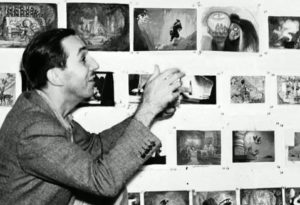 When Walt Disney recalled the night he made the first pitch for a Snow White feature to his animation staff, he remarked that the Brothers Grimm’s 1812 tale was the “perfect story.” It had an excellent balance of good and evil, lightness and drama, and lots of potential for pathos.
When Walt Disney recalled the night he made the first pitch for a Snow White feature to his animation staff, he remarked that the Brothers Grimm’s 1812 tale was the “perfect story.” It had an excellent balance of good and evil, lightness and drama, and lots of potential for pathos.
Disney was on to something when he made this statement. Fairy tales contain within them something wholly appealing to people that many cannot put their finger on. They touch us on a simple, spiritual level and teach us more about how we should behave in this life.
In the tales of authors like the Brothers Grimm, who wrote the original Snow White story, supernatural things happen to regular people that result in a moral lesson being learned – for good or ill. They are literary containers of the most basic hopes of humanity.
In the case of Snow White, the Disney version not only embraces the purpose of fairy tales but enhances them. The story of Snow White is essentially a take on the story of the fall of man.
In Snow White, the character, we have the innocence of man before the fall: beautiful, kind and selfless. The Wicked Queen is insanely jealous of Snow White’s beauty and grace (in addition to the attention she gets from the Prince) and intends to kill her – just as a certain fallen angel’s envy of humanity’s favor in the eyes of God prompts him to hate us and destroy mankind.
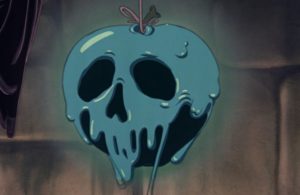 The Queen disguised herself as a peddler woman and offered Snow White a poisoned apple – even goes so far as to tell the young princess that one bite will make all her dreams come true. We can see the parallel in Genesis, with Satan (disguised as a serpent) telling Eve that she and her husband Adam would become like God if they ate of the fruit. While the consequences of Snow White’s bite of the apple was a physical death, humanity’s penance for eating the fruit was a spiritual death.
The Queen disguised herself as a peddler woman and offered Snow White a poisoned apple – even goes so far as to tell the young princess that one bite will make all her dreams come true. We can see the parallel in Genesis, with Satan (disguised as a serpent) telling Eve that she and her husband Adam would become like God if they ate of the fruit. While the consequences of Snow White’s bite of the apple was a physical death, humanity’s penance for eating the fruit was a spiritual death.
This is where the Disney fairy tale deviates from the true story of the gospel. Snow White is eventually revived by a kiss from the Prince and goes with him to his literal castle in the sky, where they live happily ever after. Rather than a benign prince who simply shows up at the end to make all things right, God’s plan for our spiritual revival was more complicated. He became one of us and died His own physical and spiritual death, one intended for us. And it is through His resurrection that we are saved from our own fate.
Snow White is a pale reflection of the real story of redemption (Adam and Eve, for instance, were not as entirely innocent in the fall as Snow White was with the Queen). But the spirit of the story is definitely in there. It reflects a hope all humanity has – a hope that was fulfilled by the death and resurrection of Jesus.
The Fairest of Them All
Snow White and the Seven Dwarfs deserves its recognition as one of the most significant films in history. Walt Disney and his staff of animators and artists essentially created an entirely new medium – elevating animation to amazing heights that other studios, as well as the studio that still bears Disney’s name, have been seeking to meet or surpass for eight decades now. It is true that there are more sophisticated animated films out there as time has gone on, but few have thrilled the moviegoing public more than Snow White.
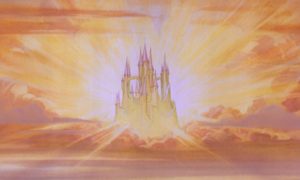 Snow White, as with most fairy tales, is a morality play at its heart, extrapolating themes from Scripture in particular. The Snow White story is an interesting parallel to the biblical story of the fall and redemption of mankind. But the real story is even better because we have not a prince but a King – the greatest of all kings – who fought evil on our behalf because He loves us. We only need to accept His grace and protection to truly be with Him in His Kingdom. And that’s way better than any fairy tale ending.
Snow White, as with most fairy tales, is a morality play at its heart, extrapolating themes from Scripture in particular. The Snow White story is an interesting parallel to the biblical story of the fall and redemption of mankind. But the real story is even better because we have not a prince but a King – the greatest of all kings – who fought evil on our behalf because He loves us. We only need to accept His grace and protection to truly be with Him in His Kingdom. And that’s way better than any fairy tale ending.


